
Browse an alphabetical list of photographs. These historical images portray people, places, and events before, during, and after World War II and the Holocaust.
<< Previous | Displaying results 1401-1425 of 2641 for "Photo" | Next >>
Jewish women return to the Kovno ghetto after forced labor on the outside. They line up to be searched by German and Lithuanian guards. Kovno, Lithuania, between 1941 and 1944.
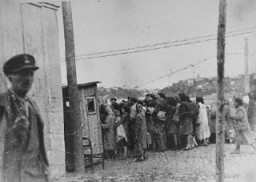
Jewish youth at the "HaRishona" (The First) Zionist training center construct a fishing boat. They are preparing for emigration to Palestine. Fano, Italy, 1946.
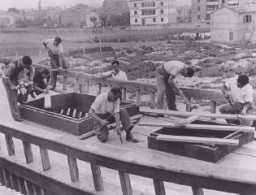
A gathering of Jewish youth from Rhodes. Rhodes, photograph taken between 1940 and 1944.
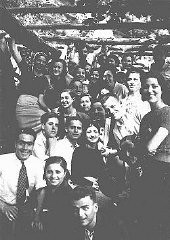
Storefronts of Jewish-owned businesses damaged during the Kristallnacht ("Night of Broken Glass") pogrom. Berlin, Germany, November 10, 1938.

A group of young boys pose on and next to the demolished vehicle of local Jewish teacher Ferdinand Stern. The car had been driven to a nearby lake and set on fire during Kristallnacht. Frankenberg, Germany, November 1938.
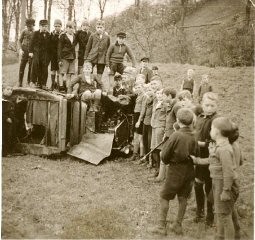
Jewish-owned shop destroyed during Kristallnacht, the "Night of Broken Glass" pogrom. Berlin, Germany, November 1938.
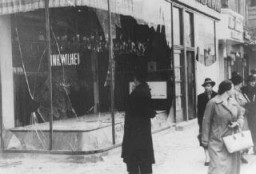

Romanian Jews who were assembled in a Bessarabian village in September 1941 before deportation to Transnistria.
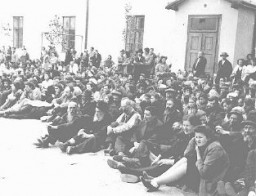
Jews at the railroad station before deportation. Puchov, Czechoslovakia, March 1942. (Source record ID: E39 Nr.2447/8)
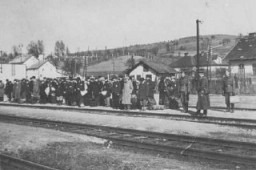
Jews captured by German troops during the Warsaw ghetto uprising in April–May 1943. This photograph appeared in the Stroop Report, an album compiled by SS Major General Juergen Stroop, commander of German forces that suppressed the Warsaw ghetto uprising. The album was introduced as evidence at the International Military Tribunal at Nuremberg. In the decades since the trial this photo has become one of the iconographic images of the Holocaust.
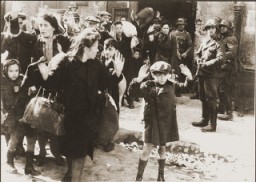
SS personnel capture two Jewish resistance fighters who were pulled from a bunker during the suppression of the Warsaw ghetto uprising. Warsaw, Poland, April 19-May 16, 1943.
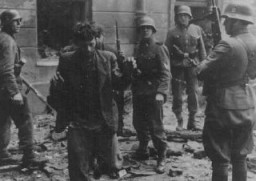
Members of the Jewish resistance are captured by SS troops on Nowolipie Street during the suppression of the Warsaw ghetto uprising. Warsaw, Poland, April 19-May 16, 1943.
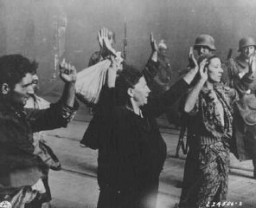
German soldiers lead Jews captured during the Warsaw ghetto uprising to the assembly point for deportation. Poland, May 1943.
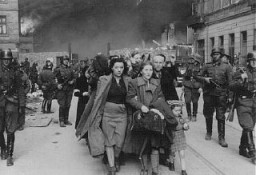
Jews captured during the Warsaw ghetto uprising. Poland, April 19–May 16, 1943.

Jews drafted into the Hungarian Labor Service System march to a work site. Szeged, Hungary, between 1940 and 1944.
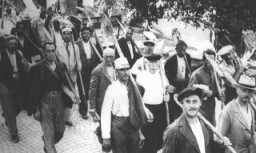
Jews forced to board a deportation ship in the Danube River port of Lom during deportations from Bulgarian-occupied territories. They were deported, through Vienna, to the Treblinka camp in German-occupied Poland. Lom, Bulgaria, March 1943.

Jews forced to move into the Lodz ghetto. Lodz, Poland, date uncertain. During the Holocaust, the creation of ghettos was a key step in the Nazi process of brutally separating, persecuting, and ultimately destroying Europe's Jews. Ghettos were often enclosed districts that isolated Jews from the non-Jewish population and from other Jewish communities.
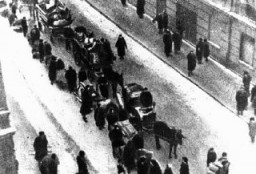
Jews from Bulgarian-occupied Macedonia interned at the "Monopol" tobacco factory, used as a transit camp, before deportation to the Treblinka killing center. Skopje, Yugoslavia, March 1943.
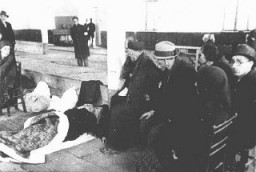
Jews from Bulgarian-occupied Macedonia interned in the "Monopol" tobacco factory, which was used as a transit camp. They were ultimately deported to the Treblinka killing center. Skopje, Macedonia, March 1943.
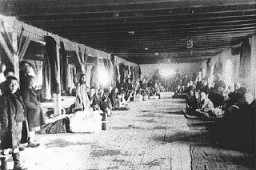
Jews from Bulgarian-occupied Macedonia who were rounded up and assembled at the Tobacco Monopoly transit camp in Skopje before deportation to the Treblinka killing center. Skopje, Yugoslavia, March 1943. The Jews of Bulgarian-occupied Thrace and Macedonia were deported in March 1943. On March 11, 1943, over 7,000 Macedonian Jews from Skopje, Bitola, and Stip were rounded up and assembled at the Tobacco Monopoly in Skopje, whose several buildings had been hastily converted into a transit camp. The…
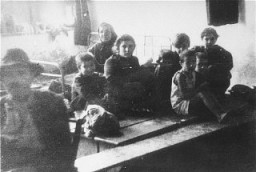
Jews from Macedonia who were rounded up and assembled in the Tobacco Monopoly transit camp before deportation to the Treblinka killing center. Skopje, Yugoslavia, March 1943. The Jews of Bulgarian-occupied Thrace and Macedonia were deported in March 1943. On March 11, 1943, over 7,000 Macedonian Jews from Skopje, Bitola, and Stip were rounded up and assembled at the Tobacco Monopoly in Skopje, whose several buildings had been hastily converted into a transit camp. The Macedonian Jews were kept there…
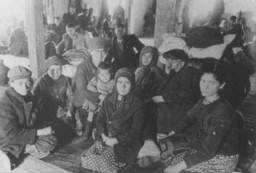
Jews from Bulgarian-occupied Macedonia who were rounded up and assembled in the Tobacco Monopoly transit camp in Skopje prepare to board deportation trains. Skopje, Yugoslavia, March 1943.
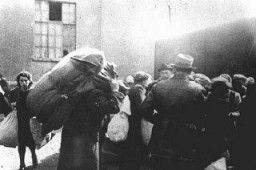
Jews from the "Kasztner train" arrive in Switzerland. This group of Jews was released from Bergen-Belsen as a result of negotiations between the Germans and Hungarian Jewish leaders Joel Brand and Rezso Kasztner. Switzerland, August 1944.
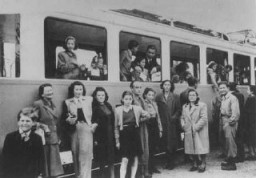
Jews from Bulgarian-occupied Macedonia and Thrace interned in the "Monopol" tobacco factory, which was was used as a transit camp. They were ultimately deported to the Treblinka killing center. Skopje, Macedonia, March 11-31, 1943.
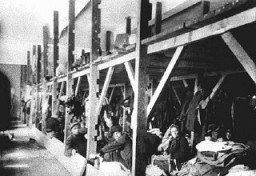
A member of the Zoska battalion of the Armia Krajowa escorts two of 348 Jews liberated from the Gęsiówka concentration camp during the Warsaw Polish uprising. August 5, 1944.
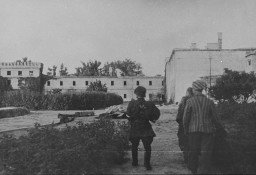
We would like to thank Crown Family Philanthropies, Abe and Ida Cooper Foundation, the Claims Conference, EVZ, and BMF for supporting the ongoing work to create content and resources for the Holocaust Encyclopedia. View the list of donor acknowledgement.